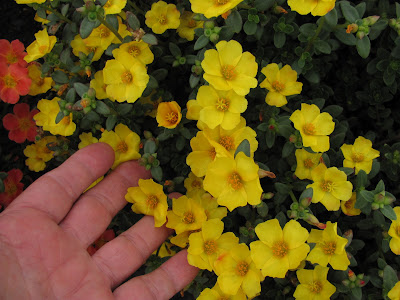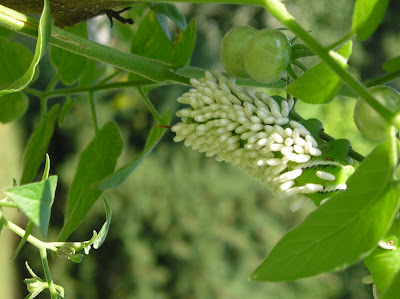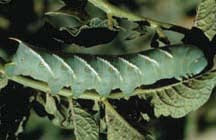 |
| SunPatients in Full Sun |
Alan H. Michael, Penn State Cooperative Extension Educator and Director of the Annual Flower Trials at the
SE Research Center in Mannheim, PA has released the winners for 2010.
The objective of the trial is help gardeners, landscapers and commercial growers select the best annual flowering plants. This year we saw constantly high temperatures above 90 degrees F. with many days at or near 100. Little rain fell for weeks on end, and then we received sudden downpours of 2-3 inches with winds exceeding 40 mph, then back to heat wave conditions. The best varieties must not only tolerate, but also thrive under these conditions. They must exhibit excellent heat tolerance, sufficient vigor to recover from storm damage, disease and insect resistance, and the ability to produce new attractive leaves and flowers. Here are some of the best plants for 2010 based on their performance:
 |
| SunPatient |
‘SunPatiens Series’ (
Impatiens Hybrida) is similar to New Guinea Impatiens, but sun tolerant. They are bred by Sakata Seeds and sold by Paul Ecke Ranch. The whole series is attractive and blooms all summer in full sun. They remain compact and do nicely in either containers or landscape beds. ‘SunPatiens Spreading Corona’, an orange variety, ‘SunPatiens Compact Blush Pink’ and ‘SunPatiens Compact White’ are the top three, although all ten varieties performed well this year.
 |
| Jade Princess |
 |
| Jade Princess |
ORNAMENTAL MILLET – This grass placed in the top ten for the second year. Most grasses are grown for their leaves and secondarily for their flowers. ‘Jade Princess’ from
Ball Horticulture (
Pennisetum glaucum) is the exception. A compact ornamental millet that grows 24-30” high, it is excellent in a mass planting or containers. Its light green foliage produces tan-pink flower heads that turn many shades of brown with no pollen. Consumers selected it as our number one variety at the Penn State Consumer Day on July 31, 2010.
 |
| Pow Wow Wild Berry |
ECHINACEA – This variety is an improved native coneflower,
‘PowWow Wild Berry’ (
Echinacea purpura) bred by PanAmerican Seed. It’s showy, with 3 – 4” flowers that have an intense deep rose/purple color and is hardy to zone 3. It received the 2010 All American Selection Award. A seed cultivar, it works well in both gardens and containers due to its basal branching. Reaching a height of 24”, it begins blooming in April when it receive 14 hours of daylight. Combined with its sister coneflower,
‘PowWow White’ it makes an eye-catching display.
 |
| Vertigo |
GRASS – The new introduction
’Vertigo’ (
Pennisetum purpureum) is part of the Graceful Grass series from Proven Winners. The stunning mahogany foliage grows about 3 foot high in containers and about 4 foot in landscape. It makes a wonderful backdrop for annual flowers.
 |
| Vivid Yellow Portulaca |
PORTULACA/PURSLANE – The
Pazzazz Series of portulaca (
Purslane sp.) from Danziger of Israel was far and away the talk of this trial year’s trial. The series had outstanding flowering with
‘Tangerine’ and ‘
Vivid Yellow’ the top varieties. They took all the heat and drought we could toss their way and they asked for more. If only they would stay open longer during the day, they could be the number one plant this year.
Insect problems:
During the heat waves of July, Western flower thrips became a problem; we used sprays to reduce numbers. We then applied a biocontrol using a predatory mite ‘
Cucumerous swarovski’ to keep them under control. Aphids were a problem, but by selecting soft (organic) insecticides we allowed natural biocontrol to develop.
The biggest problem in August and September is caused by a the same caterpillar that affects sweet corn, the Corn Ear Worm, but it is known as the budworm in flowers! The adult moths fly up from the south in August and lays its’ eggs on the youngest flower buds of petunias, geraniums and callibrachoa. It mines the inside of the buds, leaving a small, barely visible hole on an unopened bud. Control can be obtained by applying weekly applications of the biocontrol called “BT” (Bacillus thurenginsis) in August.
Disease Problems:
The internal leaves of petunia and calibrachoa began to turn brown during the few wet periods we had between heat waves. Diagnosed, as Alternaria Blight, similar to early blight on tomatoes, it required two sprays of Daconil – chlorothalonil fungicide to bring it under control. We also saw some Rhizoctonia blight that caused leaf death. Sadly no good biocontrol exists for these pathogens as of yet.
For complete results of the Penn State Variety Trials go to the website:
http://stores.trialgardenspsu.com/

























